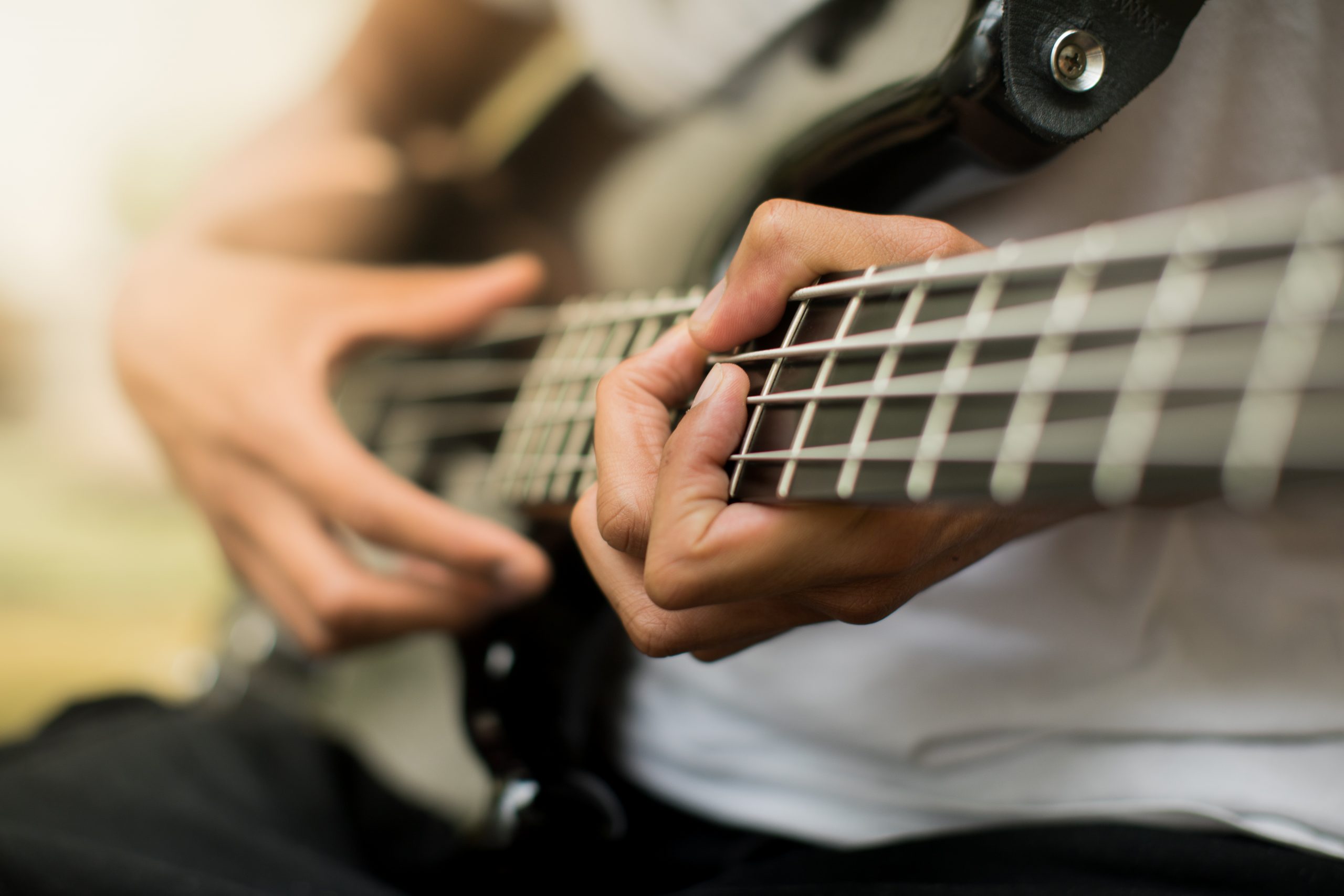Home>Production & Technology>Sound>What Part Of The Outer Ear Transmits Sound By Vibrating


Sound
What Part Of The Outer Ear Transmits Sound By Vibrating
Published: December 18, 2023
Discover how sound is transmitted through the outer ear by vibrating and learn about the intricate components involved in this essential process.
(Many of the links in this article redirect to a specific reviewed product. Your purchase of these products through affiliate links helps to generate commission for AudioLover.com, at no extra cost. Learn more)
Table of Contents
Introduction
The ability to hear and perceive sound is a fundamental part of our daily lives. From the melodic notes of a symphony to the chirping of birds in the morning, sound provides us with a rich and dynamic experience of the world around us. But have you ever wondered how sound actually reaches our ears and allows us to hear?
The answer lies in the complex and remarkable structure known as the outer ear. Made up of several different components, the outer ear plays a crucial role in the process of sound transmission. It is responsible for capturing sound waves from the environment and directing them towards the inner ear, where they are transformed into electrical signals that our brain can interpret as sound.
In this article, we will explore the anatomy of the outer ear and shed light on the specific part of the outer ear that transmits sound by vibrating. We will dive into the fascinating world of ear anatomy and delve into the intricacies of how we perceive sound.
So, let’s embark on this auditory journey and unravel the mysteries of the outer ear!
Anatomy of the Outer Ear
The outer ear, also known as the external ear or auricle, is the visible part of our ear that we commonly refer to as the earlobe and the fleshy external structure. It is composed of three main components: the pinna, the external auditory canal, and the tympanic membrane.
The pinna, or the auricle, is the part of the outer ear that we can see on the side of our head. Its main function is to collect sound waves from the surrounding environment and direct them towards the ear canal. The shape and structure of the pinna help to funnel sound into the ear, allowing us to better perceive and locate the source of the sound.
Connected to the pinna is the external auditory canal, also known as the ear canal. This canal is a narrow tube that extends from the pinna to the tympanic membrane, or eardrum. It is lined with specialized skin cells and is responsible for transmitting sound waves from the pinna to the eardrum.
Last but not least, the tympanic membrane is a thin, delicate layer of tissue that marks the boundary between the outer ear and the middle ear. It is commonly likened to a drum, as it vibrates in response to sound waves. These vibrations are then transmitted to the middle ear, setting off a chain of events that eventually leads to the perception of sound.
Each component of the outer ear works in harmony to capture and transmit sound waves for further processing. The pinna collects sound, the external auditory canal channels sound towards the eardrum, and the tympanic membrane vibrates in response to these sound waves. This intricate collaboration allows us to receive and interpret the auditory information that surrounds us.
Now that we have gained a basic understanding of the anatomy of the outer ear, let’s explore how these structures function in the process of sound transmission.
Function of the Outer Ear
The primary function of the outer ear is to gather and direct sound waves towards the inner ear for further processing. This function is achieved through the combined efforts of the pinna, the external auditory canal, and the tympanic membrane.
The pinna, with its unique shape and contours, plays a crucial role in sound localization. By collecting sound waves from the surrounding environment, the pinna enhances our ability to pinpoint the source of a sound. This is particularly important in situations where we need to identify the direction of a sound, such as when crossing the street or following a conversation in a crowded room.
Once sound waves are collected by the pinna, they travel through the external auditory canal. This canal acts as a pathway, guiding the sound waves towards the eardrum. The narrow and tubular structure of the external auditory canal helps to amplify certain frequencies of sound, allowing us to better perceive them.
When the sound waves reach the eardrum, they cause the tympanic membrane to vibrate. The movement of the tympanic membrane is crucial in transferring the sound energy from the outer ear to the middle ear. These vibrations are then transmitted to the tiny bones in the middle ear called the ossicles, which amplify and transmit the sound further into the inner ear.
It is important to note that the outer ear also serves a protective function. The structure of the pinna and the presence of hair and earwax in the ear canal help to prevent debris and foreign objects from entering the ear. Additionally, the curved shape of the pinna acts as a natural barrier, protecting the delicate structures of the middle and inner ear from potential damage.
Overall, the function of the outer ear is multifaceted. It not only aids in the collection and transmission of sound waves but also contributes to our ability to localize sounds and protect the delicate structures of the inner ear. Without the functioning of the outer ear, our ability to perceive and interpret sound would be severely compromised.
Now that we have explored the role of the outer ear in sound transmission, let’s dive deeper into the specific part of the outer ear that is responsible for transmitting sound through vibrations: the tympanic membrane.
The Role of the Tympanic Membrane in Sound Transmission
The tympanic membrane, also known as the eardrum, is a thin, translucent layer of tissue that separates the outer ear from the middle ear. It plays a vital role in the process of sound transmission, converting sound waves into mechanical vibrations that can be further processed by the middle and inner ear.
When sound waves enter the ear through the pinna and the external auditory canal, they reach the tympanic membrane. The sound waves cause the eardrum to vibrate in response to the variations in air pressure. The complex structure of the tympanic membrane allows it to resonate and amplify these vibrations.
The vibrations produced by the tympanic membrane are then transmitted to the ossicles, a chain of three tiny bones located in the middle ear: the malleus (hammer), incus (anvil), and stapes (stirrup). These bones function as a lever system, efficiently transferring the vibrations from the larger area of the eardrum to the smaller area of the oval window in the inner ear.
The transfer of these mechanical vibrations from the tympanic membrane to the ossicles is crucial to amplify the sound signal. The vibrations are mechanically amplified by the ossicles, specifically the leverage provided by the malleus and incus, which act like a lever to increase the force applied to the stapes.
As the stapes bone moves back and forth against the oval window of the cochlea, a spiral-shaped structure in the inner ear, it creates fluid waves within the cochlea. These fluid waves stimulate the sensory hair cells in the cochlea, which convert the mechanical vibrations into electrical signals that can be processed by the auditory nerve and sent to the brain for interpretation as sound.
The precise and coordinated movement of the tympanic membrane is crucial for accurate sound transmission. Any disruptions or damage to the eardrum can affect its ability to vibrate effectively, leading to hearing loss or impairment.
In some cases, when the eardrum is damaged or perforated, medical intervention may be necessary to restore its function. This can include procedures such as tympanoplasty, where a graft is used to repair the eardrum, or myringoplasty, where a patch is placed over the perforation to promote healing.
Overall, the role of the tympanic membrane in sound transmission is vital. It acts as a bridge between the outer and middle ear, converting sound waves into mechanical vibrations that can be further processed by the intricate structures of the middle and inner ear.
Now that we have explored the role of the tympanic membrane, let’s recap the importance of the outer ear and its components in the entire process of sound transmission.
Conclusion
The outer ear, with its intricate anatomy and specialized components, plays a crucial role in the process of sound transmission. From the pinna that collects sound waves to the external auditory canal that channels them towards the eardrum, each component of the outer ear has a specific function that contributes to our ability to hear and perceive sound.
However, it is the tympanic membrane, or eardrum, that takes center stage in sound transmission. Through its delicate and precise vibrations in response to sound waves, the eardrum acts as a gateway, transferring mechanical energy from the outer ear to the middle ear. Its ability to resonate and amplify these vibrations is essential in ensuring that the sound signal reaches the inner ear in a form that can be processed by the auditory system.
The role of the tympanic membrane is not only significant in the mechanics of sound transmission but also in maintaining the overall health and functionality of the ear. Any damage or disruptions to the eardrum can have a detrimental effect on our hearing ability and may require medical intervention to restore its function.
Understanding the anatomy and function of the outer ear, particularly the role of the tympanic membrane, helps us appreciate the complexity and beauty of our auditory system. It highlights the remarkable ability of our ears to capture, process, and interpret sound, allowing us to experience the world in rich and vibrant ways.
So, the next time you hear the sound of laughter, the soothing notes of music, or the gentle rustle of leaves, take a moment to marvel at the incredible journey that sound waves undertake through the outer ear and beyond. Our ears truly are remarkable instruments, continuously working to bring the world of sound to life.
In conclusion, the outer ear, including the tympanic membrane, is a vital part of our auditory system that enables us to perceive and appreciate the wonders of sound.











